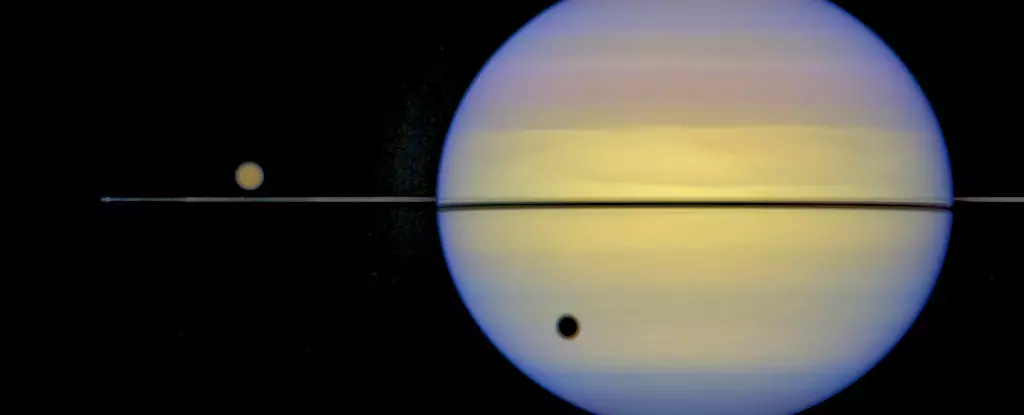The hopes of discovering some form of extraterrestrial life within our own Solar System have taken a hit with recent findings that suggest Saturn’s largest moon, Titan, may be barren. This revelation has caused disappointment among scientists and astrobiologists who were optimistic about the potential for life in the icy worlds of the outer Solar System.
Titan, as one of the Solar System’s few celestial bodies with continuous liquid water trapped below a thick crust of ice, had been a prime candidate for the emergence of some form of biochemistry. However, life requires more than just water to exist, and Earth is currently the only planet known to possess all the necessary ingredients in sufficient quantities.
While Titan does have an abundance of organic molecules in its methane-rich atmosphere, the challenge lies in getting these molecules to seep through the thick ice crust into the subterranean oceans where living chemistry could potentially arise. The flow of these molecules through the moon’s environments was estimated by a team of researchers led by astrobiologist Catherine Neish, using impact craters as a potential driving force.
Unfortunately, the calculations suggest that Titan remains barren due to the lack of a free-flowing carbon cycle. The rate of comet strikes on the moon would only transfer a small amount of organic molecules into the potential sanctuary of the moon’s ocean, which is insufficient to sustain life. This highlights the importance of not only water but also other elements, particularly carbon, for the emergence of life.
Read More: Revealing the Ancient Tsunami in Western Canada
Despite the disappointing findings, the value of studying Titan as a shrouded, secretive icy moon remains significant. Titan’s surface composition provides a unique laboratory for studying organic chemistry, offering insights that may deepen our understanding of the Universe and ourselves. Neish emphasizes the need to land on Titan and sample its surface to determine its composition accurately.
Neish’s involvement in NASA’s Dragonfly project, set to land a drone on Titan in 2028, represents a significant step towards exploring the moon’s surface and potentially uncovering evidence of prebiotic reactions. By studying Titan’s organic-rich surface up close, scientists hope to learn more about how life could potentially arise on different planets.
While the recent findings regarding Titan may dampen the search for extraterrestrial life in our Solar System, the significance of continued scientific exploration and study of celestial bodies like this icy moon cannot be overstated. The challenges and disappointments in the search for life beyond Earth only serve to fuel our curiosity and commitment to unraveling the mysteries of the Universe.


Leave a Reply